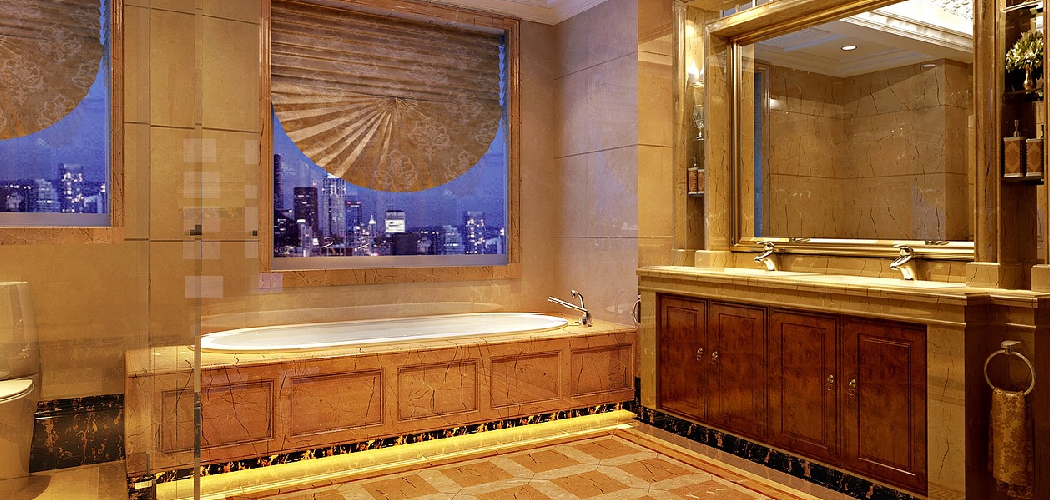Maintaining the pristine beauty of marble tiles in your bathroom requires proper care and cleaning techniques. Marble is a luxurious yet delicate material that can be easily damaged by harsh chemicals or improper handling. With the right approach, you can preserve its natural shine and elegance for years to come. This guide will walk you through how to clean marble tiles in bathroom.
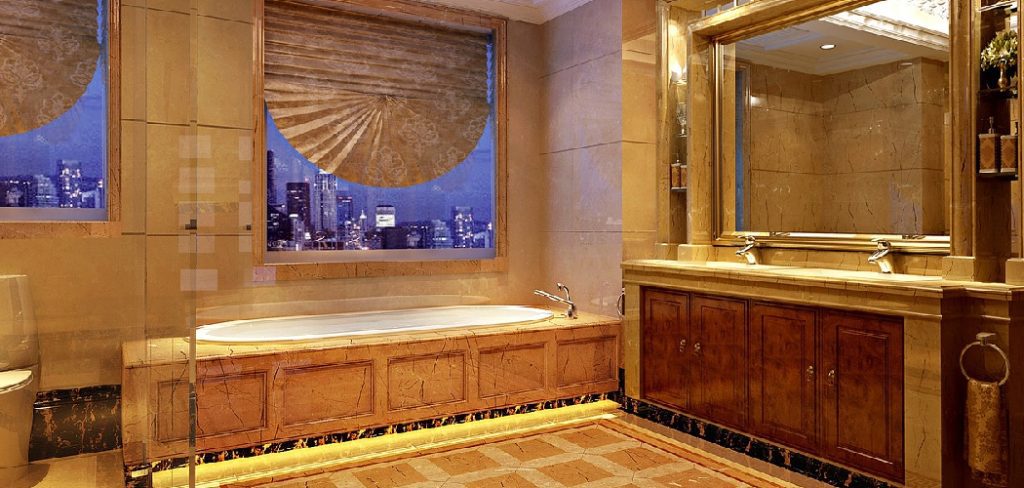
Importance of Proper Care
Proper care is essential to maintain the integrity and beauty of marble tiles. Marble, being a porous and sensitive material, is prone to stains, scratches, and etching if not handled correctly. Harsh cleaning agents or abrasive tools can dull its surface and cause permanent damage. Furthermore, neglecting regular maintenance can lead to a buildup of soap scum, mold, or mildew, which not only detracts from the appearance but can also be challenging to remove.
By practicing correct cleaning and maintenance methods, you can ensure that your marble tiles remain a timeless and elegant feature in your bathroom.
Understanding Marble Tiles
Marble is a natural stone that has been admired for centuries for its unique patterns and luxurious finish. It is formed from limestone subjected to intense heat and pressure, resulting in a dense, crystalline structure. The veining and color variations in marble are created by minerals present during its formation, making each piece one of a kind. However, this natural beauty comes with certain vulnerabilities.
Marble is a porous material, which means it can absorb liquids and is susceptible to staining. Additionally, it is softer than other stones like granite, making it more prone to scratching and etching from acidic substances. Understanding the characteristics of marble tiles helps in choosing the best methods to clean and maintain them, ensuring their beauty and durability endure over time.
Tools and Materials Needed
To effectively clean marble tiles in your bathroom without causing damage, you will need the right tools and materials. Here’s a list of essential items:
- Soft microfiber cloths or sponges – For gentle cleaning and drying without scratching the surface.
- pH-neutral marble cleaner – Specially formulated to clean marble without risking damage from acidity or harsh chemicals.
- Warm water – Used for diluting cleaners and rinsing the surface.
- Soft-bristled brush – Useful for addressing grout lines or stubborn buildup without abrading the marble.
- Spray bottle – For applying cleaning solutions evenly to the tiles.
- Marble sealer – To protect the surface from stains and moisture.
- Distilled water – Especially important in areas with hard water, to avoid mineral deposits or streaking.
- Rubber gloves – To protect your hands while working with cleaning products.
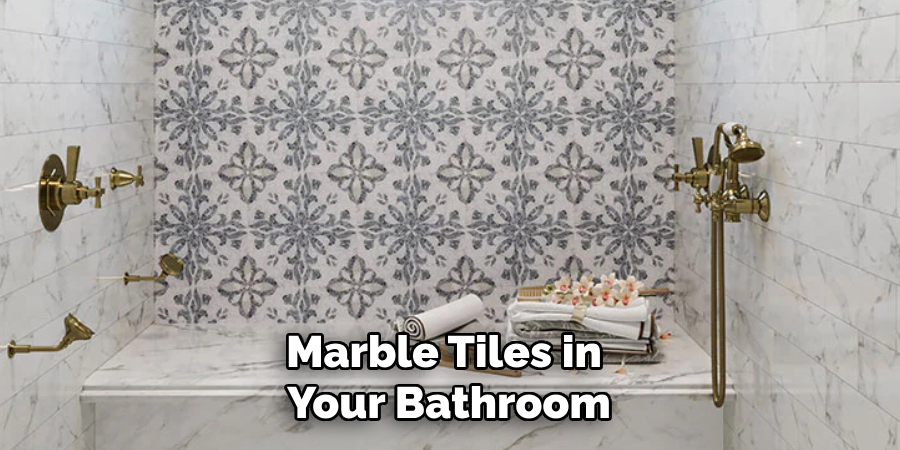
Having these tools and materials on hand ensures that you can clean and maintain your marble tiles safely and effectively.
10 Methods How to Clean Marble Tiles in Bathroom
1. Gather Appropriate Cleaning Supplies
Before starting, collect the tools and cleaning agents suitable for marble. Avoid harsh chemicals like bleach or acidic cleaners that can damage the marble’s surface. Use a pH-neutral stone cleaner, microfiber cloths, a soft-bristle brush, and warm water. Having the right supplies ensures you won’t inadvertently harm the tiles.
2. Sweep or Vacuum the Surface
Dust and debris can act like sandpaper, scratching the marble’s delicate surface. Start by sweeping the area with a soft broom or using a vacuum cleaner with a brush attachment. This step removes loose particles, making subsequent cleaning more effective and preventing potential damage.
3. Wipe with Warm Water
For routine cleaning, use warm water and a microfiber cloth to wipe down the marble tiles. Dampen the cloth, wring out excess water, and gently clean the surface. This method removes light dirt and grime without the need for harsh chemicals. Dry the tiles with a separate microfiber cloth to avoid water spots.
4. Use a pH-Neutral Cleaner
For deeper cleaning, apply a pH-neutral cleaner specifically designed for marble. Follow the manufacturer’s instructions to dilute the cleaner as needed. Apply it to the tiles using a soft cloth or sponge, working in small sections. Rinse thoroughly with clean water to remove any residue, as leftover cleaner can dull the surface.
5. Address Stubborn Stains with a Poultice
Marble’s porous nature makes it prone to staining. To tackle stubborn stains, use a poultice made from baking soda and water. Mix the ingredients into a paste and apply it to the stain. Cover the area with plastic wrap and let it sit for 24 hours. Once dry, gently scrape off the poultice and rinse the area. This method draws out deep-seated stains without damaging the tile.
6. Clean Grout Lines
Grout can accumulate dirt and mildew, detracting from the beauty of your marble tiles. Use a soft-bristle brush and a gentle cleaning solution to scrub the grout lines. Avoid abrasive tools that can scratch the marble edges. Rinse thoroughly and dry the area to prevent moisture from seeping back into the grout.

7. Remove Water Spots
Hard water can leave unsightly spots on marble tiles. To remove these, dampen a cloth with distilled water and gently rub the affected area. If the spots persist, use a marble-safe cleaner. Avoid using vinegar or lemon-based solutions, as their acidity can etch the marble’s surface.
8. Polish for Shine
Over time, marble can lose its natural luster. Restore its shine by using a marble-safe polishing product. Apply the polish with a clean, dry microfiber cloth, working in circular motions. Buff the surface to a gleaming finish. Regular polishing enhances the marble’s appearance and provides a protective layer against dirt and stains.
9. Seal the Marble Tiles
Sealing is an essential step to protect marble tiles from stains and moisture. Use a high-quality marble sealer, applying it according to the manufacturer’s instructions. Typically, the sealer is sprayed or wiped on, allowed to penetrate, and then buffed off. Reapply the sealer every 6-12 months for optimal protection.
10. Maintain a Regular Cleaning Routine
Prevention is key to keeping marble tiles looking pristine. Develop a regular cleaning routine that includes daily wiping, weekly deeper cleaning, and periodic polishing and sealing. Promptly clean up spills to prevent stains, and use mats or rugs to minimize water exposure in high-traffic areas. Consistent care extends the lifespan and beauty of your marble tiles.
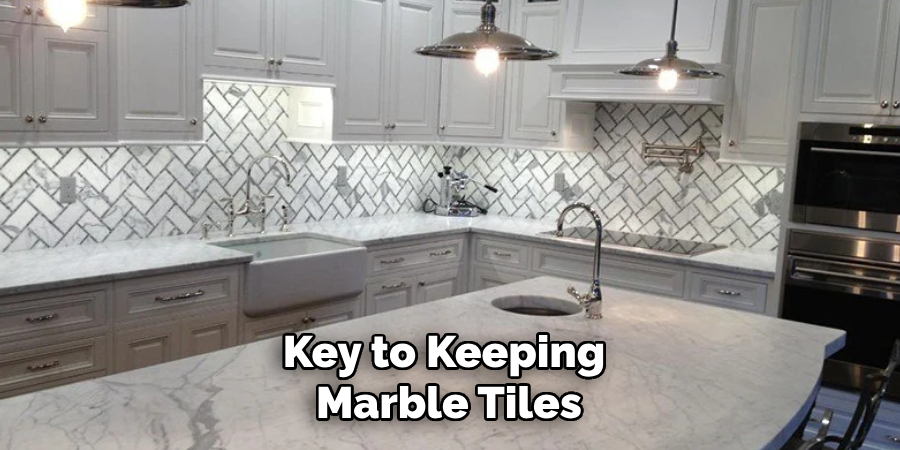
Maintenance Tips for Marble Tiles
Proper maintenance of marble tiles can help preserve their elegance and extend their lifespan. Here are some crucial tips to ensure your marble tiles remain in excellent condition:
- Act Quickly on Spills – Marble is highly porous and can absorb liquids easily, leading to stains. Clean spills immediately using a soft cloth and pH-neutral cleaner. Avoid letting substances like coffee, wine, or oil sit on the surface.
- Use Protective Mats and Rugs – Place mats or rugs in high-traffic areas or near water sources, such as bathroom sinks or showers, to reduce wear and protect against water exposure.
- Avoid Harsh Cleaning Products – Do not use abrasive cleaners, acidic solutions, or scrubbing pads on marble tiles, as these can cause permanent damage. Always stick to gentle, marble-safe products.
- Dust and Sweep Regularly – Dust and debris can scratch marble surfaces over time. Keep the tiles free of dirt by sweeping with a soft broom or using a vacuum cleaner equipped with a brush attachment.
- Rotate Decorative Items – If you keep objects like soap dishes or décor on your marble, rotate them frequently to avoid discoloration or marks.
Common Mistakes to Avoid
When caring for marble tiles, avoiding common mistakes is crucial to preserve their beauty and durability. Here are some key errors to steer clear of:
- Using Acidic or Abrasive Cleaners – Cleaners containing vinegar, lemon, or other acidic ingredients can etch the marble, causing dull spots and irreparable damage. Abrasive scrubbing tools can scratch the surface and degrade its polished finish.
- Skipping Sealing – Failing to seal marble tiles leaves them vulnerable to stains and water damage. Ensure regular resealing to maintain the protective barrier.
- Allowing Spills to Sit – Marble easily absorbs liquids due to its porous nature. Leaving spills, especially from acidic or dark-colored substances like coffee, soda, or wine, can lead to permanent stains.
- Using Excess Water – Over-saturating marble tiles during cleaning can seep into the pores, promoting moisture damage and discoloration over time. Always use a damp, not soaking, cloth and dry the surface thoroughly afterward.
- Overlooking Grout Maintenance – Neglecting grout can lead to mildew or dirt buildup that impacts the appearance of the marble. Regularly clean and maintain grout lines to keep them spotless.
- Dragging Heavy Objects – Dragging furniture or heavy items across marble tiles can cause scratches or chips. Always lift items when moving them to protect the surface.
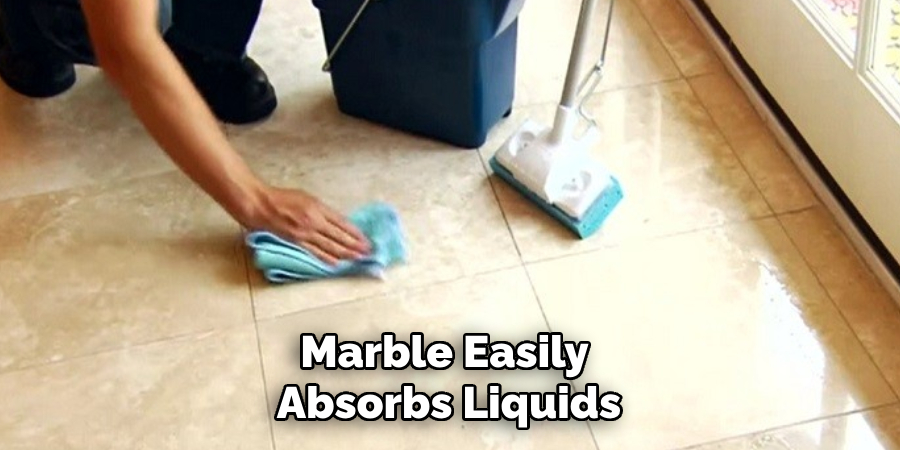
Conclusion
Caring for marble tiles requires consistent effort and attention, but the results are well worth it. By following proper cleaning techniques, sealing regularly, and avoiding common mistakes, you can preserve the timeless beauty and durability of your marble surfaces for years to come. Marble’s natural elegance and charm make it a standout choice for flooring and décor, and with a thoughtful maintenance routine, it will continue to bring sophistication and value to your space.
Thanks for reading our blog post on how to clean marble tiles in bathroom! We hope you found it helpful and informative.

